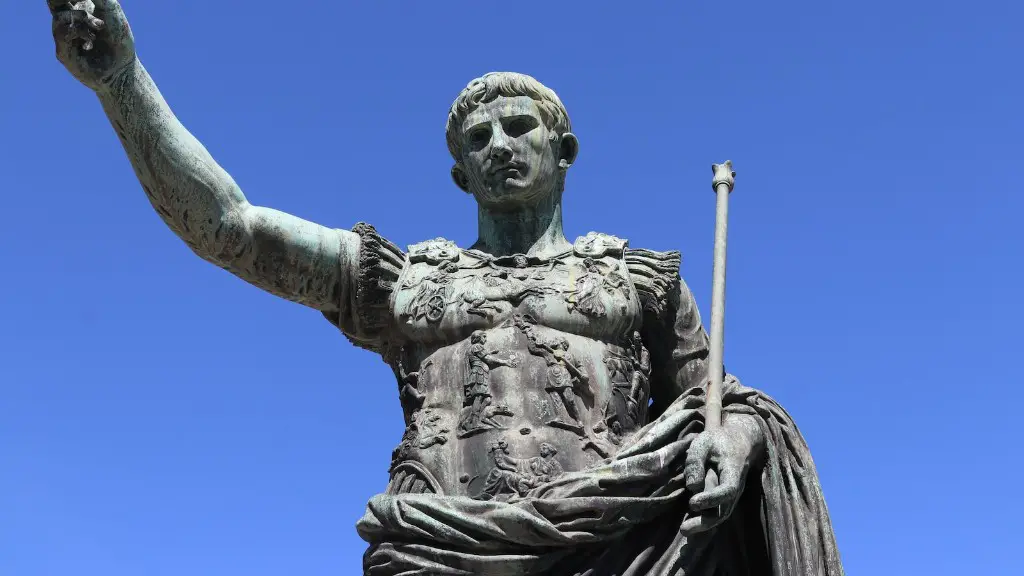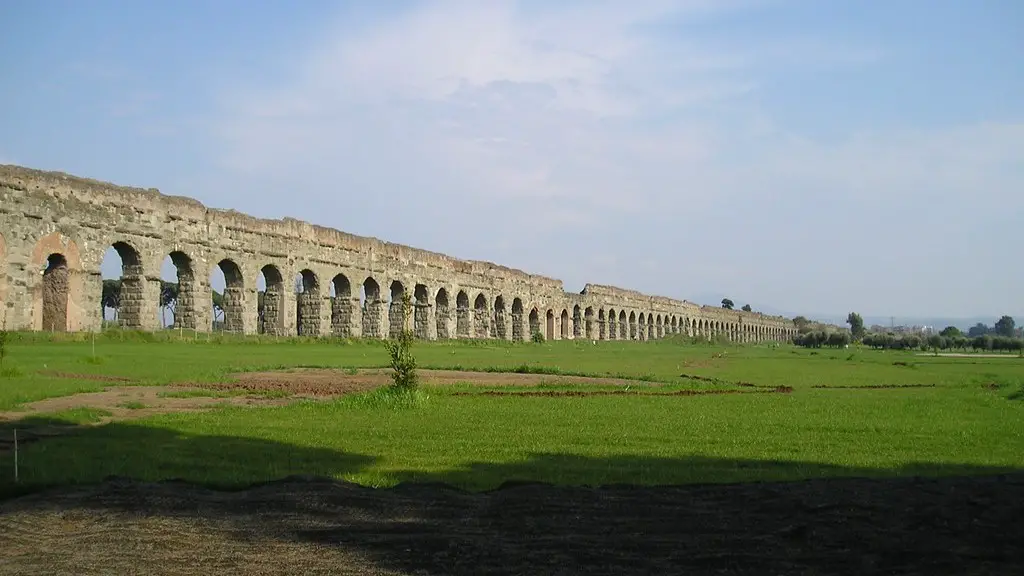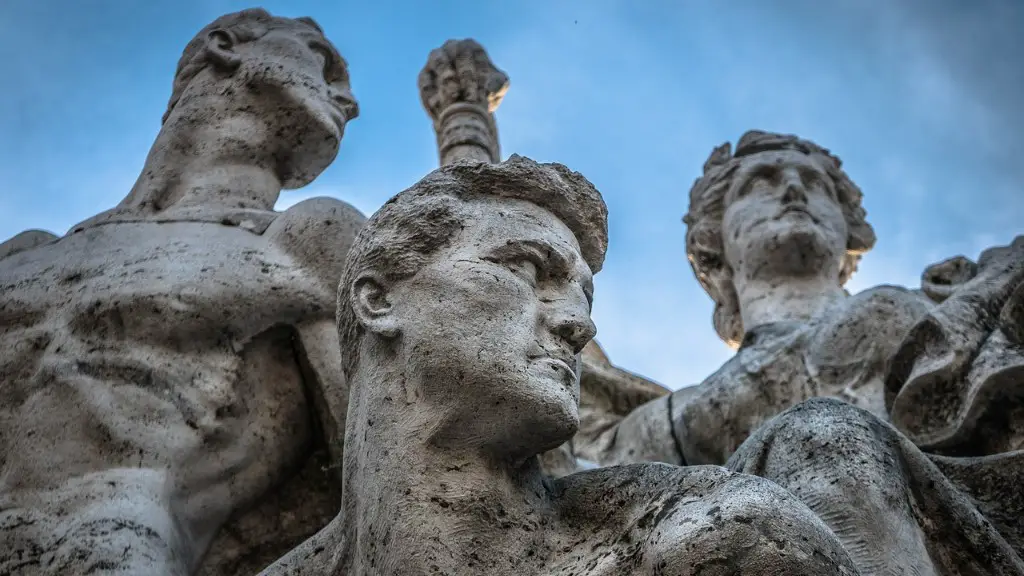The ancient Romans were a complex and advanced society. The Roman hierarchy was divided into three broad classes: the patricians, the plebeians, and slaves. The patricians were the elite class, while the plebeians were the commoners. Slaves were the lowest class, and were owned by the patricians and plebeians. The Roman diet was derived from three main sources: agriculture, livestock, and hunting. The main crops grown by the Romans were wheat, barley, oats, and rye. The Romans also cultivated vegetables such as beans, cabbage, and onions. Fruits such as figs, grapes, and pomegranates were also grown. Livestock such as cattle, pigs, sheep, and goats were raised for meat and dairy products. Hunting was also a significant source of food for the Romans. Wild game such as deer, boar, and hare were hunted for their meat.
The low class Ancient Romans ate a lot of bread and porridge. They also ate beans, chickpeas, and lentils.
What did low class Romans eat?
The Roman diet was quite simple, consisting mostly of bread, vegetables, soup, and porridge. Meat and shellfish were a luxury, unless they lived in the countryside and could go hunting or fishing. The bread was sometimes dipped in wine and eaten with olives, cheese, and grapes.
The typical Roman diet consisted of cereals and legumes as the main staples, with sides of vegetables, cheese, or meat. These dishes were often covered with sauces made out of fermented fish, vinegar, honey, and various herbs and spices. This diet was relatively simple, but provided the necessary nutrients and energy for the average Roman citizen.
What did lower class Romans eat for breakfast
For those who could afford it, breakfast (jentaculum), eaten very early, would consist of salted bread, milk, or wine, and perhaps dried fruit, eggs, or cheese.
What was eaten for dinner varied among classes. The poor might only eat a simple meal of vegetables and porridge, whereas the rich could enjoy such luxuries as several course meals and exotic food and wine. Wheat was boiled to make the tasteless porridge.
What meat did poor Romans eat?
While pork was the most popular meat in ancient Rome, beef was more common in ancient Greece. Seafood, game, and poultry were more usual.
The Romans typically ate one large meal per day, around sunset. This meal was originally eaten around midday, with a smaller meal (often just bread) in the morning. This smaller meal was called ientaculum, or breakfast. Supper or vesperna was a smaller meal in the evening.
What did poor Romans drink?
Posca was a popular drink among ancient Roman soldiers and poor peasants because it was a cheap and easy way to get their hands on alcohol. The drink was made by mixing water and vinegar, and sometimes a bit of honey or fruit juice was added to sweeten it.
The findings from the research showed that stews or pottages of meat and vegetables were the mainstay of the medieval peasant diet. Dairy products also played an important role in their diet.
Did ancient Romans eat pasta
Despite some similarities, the Romans ate neither pizza or pasta. That said, descriptions from ancient sources do reveal a popular food made from flour and water that, on the surface, resembles the ingredients for making pasta. At the risk of being pedantic, however, that is where the similarities end.
Did you know pizza took the United States by storm before it became popular in its native Italy? Pizza has a long history Flatbreads with toppings were consumed by the ancient Egyptians, Romans and Greeks (The latter ate a version with herbs and oil, similar to today’s focaccia. Pizza as we know it today originated in Italy and was brought to America by Italian immigrants in the late 1800s. The first pizzeria in the United States opened in New York City in 1905. Pizza quickly became a popular dish among Americans, and today there are thousands of pizzerias across the country.
Why did the Romans eat lying down?
Bloating can be reduced by lying down on a comfortable, cushioned chaise longue. The horizontal position is believed to aid digestion, and it is the utmost expression of an elite standing. The Romans actually ate lying on their bellies so the body weight was evenly spread out and helped them relax.
The Roman belief that it was healthier to eat only one meal a day had a lasting impact on the way people ate for a very long time. This thinking was driven by the Roman obsession with digestion and the belief that eating more than one meal was a form of gluttony. This belief influenced the way people ate for many centuries afterwards.
What did slaves eat in ancient Rome
The core staples for slaves were low-quality bread and cheap wine, but they were also supplemented by average fruits and vegetables, as well as soups, stews, and other hot meals. This diet was likely not enough to meet the nutritional needs of slaves, who worked long hours and had very active lifestyles.
The rich lived in luxury apartments with heat, water, and kitchens. They also had access to the best food, clothes, and entertainment. The lives of the rich and poor were very different in ancient Rome.
What is a typical Roman breakfast?
A typical breakfast for a Roman looks like a quick coffee and a pastry, eaten standing at the bar. A frothy cappuccino and a warm cornetto is the most common combination. Italian cornetti are sweeter than French croissants and come vuoto (plain) or filled with jam, custard or Nutella.
The most common vegetables in ancient Rome were lettuce, cabbage, and leek. The rich ones could also afford asparagus, mushrooms and artichokes, which are now so common in modern Roman cuisine. In terms of legumes, they were very fond of broad beans, lentils, and chickpeas.
What did Romans eat for kids
The Romans started their day with breakfast early in the morning. The breakfast included bread, eggs, cheese, milk or wine and perhaps some dried fruits like figs. They could add lentils, vegetables, fruits like figs and apples, and eggs to their usual diet to make it more nutritious.
Bananas are a highly popular fruit all over the world, and it is interesting to note that they have a long and complex history. The first bananas are thought to have originated in Southeast Asia, and from there they spread to Africa and then to Europe. Antonius Musa, the personal physician to the Roman emperor Octavius Augustus, is credited with promoting the cultivation of bananas in 63-14 BC. Portuguese sailors then brought bananas to Europe from West Africa in the early fifteenth century. Today, bananas are grown in many tropical and subtropical countries and are enjoyed by people all over the world.
Conclusion
Most low class ancient Romans would have had a diet based mostly on grains, vegetables, and legumes, with some occasionally meat.
The low class ancient Romans ate a lot of bread and pasta as their staple diet. They also had a lot of vegetables and fruits.





